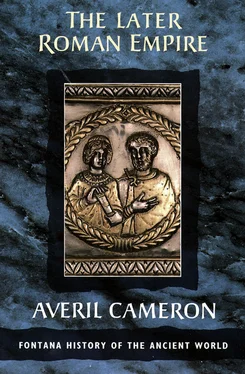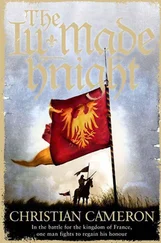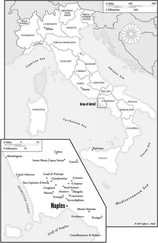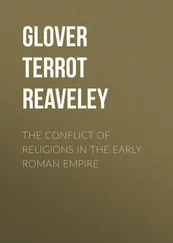First of all, Constantine has to be seen in the context of the tetrarchy. Born in AD 272 or 273, his father was Constantius, yet another Illyrian soldier who had risen to praetorian prefect and Caesar to Maximian, and who had been made Augustus on the latter’s abdication in AD 305. Constantine accompanied Diocletian and Galerius on a number of military expeditions. The Constantinian version, wishing to blacken Galerius, has it that he eventually eluded the suspicious emperor only by a ruse, escaping post-haste and finding his father already on his deathbed; in fact he found his father about to cross the Channel, and went with him to York, where on the latter’s death Constantine was proclaimed Augustus on 25 July, AD 306 by his father’s troops. The politics and the chronology of the events between the joint abdication of Diocletian and Maximian in AD 305 and Constantine’s defeat of Maxentius at the Battle of the Milvian Bridge in late October, AD 312, are extremely confused and difficult to establish, even though the tendentious literary sources can be supplemented by the evidence of coins and papyri, as well as by a few inscriptions. Constantine’s propaganda began early: an anonymous panegyrist of AD 307 shows him allying himself with Maximian (who had returned from his short-lived abdication) by marrying his daughter Fausta. The author ends by imagining that he is addressing Constantine’s dead father Constantius and envisaging the joy he must be feeling in heaven that Constantine has the same adopted father (Maximian, the senior Augustus in the Herculian line), while he and Maximian now share the same son ( Pan. Lat . VI (7).14).
Though Lactantius claims that he was already pro-Christian ( DMP 24), the same panegyric makes much of Constantine as a Herculian, stressing his claim to the divine titulature adopted by Maximian. By AD 310, however, things had changed dramatically: Maxentius, the son of Maximian, had seized Rome and Maximian himself, having turned on both Maxentius and Constantine, had committed suicide after Constantine had taken up arms against him. A further justification of Constantine’s position was now required, and an anonymous panegyric of AD 310 duly produces a novel claim to dynastic descent from the third-century emperor Claudius Gothicus, as well as crediting him with a symbolic vision of Apollo:
you saw, Constantine, I believe, your own Apollo, accompanied by Victory, offering you a laurel crown, signifying three decades of rule. ( Pan. Lat . VII (6).21)
In the same year Mars gave way on Constantine’s coins to Sol Invictus, the sun-god, with whom Apollo was identified. This new step looked back to the pre-tetrarchic precedent set by Aurelian (AD 270–5), who issued coins commemorating his immediate predecessor, the deified Claudius Gothicus, and associated himself with the sun-god. Constantine now claimed legitimacy on grounds of dynastic descent in order to defend himself against charges of having broken away from the tetrarchy.
The truth was that the tetrarchy had already broken down, and that Constantine was looking to the future. In AD 311, the eastern Augustus Galerius called off the persecution on his deathbed and expired in great pain, to the satisfaction of Lactantius and other Christian writers. Maximin (Maximinus Daia, nephew of Galerius), who had been declared Augustus by his own troops, now seized Asia Minor from Licinius, who had been appointed Augustus at the Conference of Carnuntum in AD 308. Constantine had now to protect his position; in 312 he marched down through Italy, besieging Segusio, entering Turin and Milan and taking Verona. Maxentius came out from Rome to meet his army and Constantine inflicted a heavy defeat on his troops at the Milvian Bridge over the Tiber on 28 October, AD 312. Many of Maxentius’s soldiers drowned in the river and his own head was carried on a pike through Rome. Constantine entered Rome in triumph and addressed the anxious senators, many of whom had supported Maxentius, promising clemency. The battle was depicted as a great defeat of tyranny by justice, as is recorded on the inscription on the the Arch of Constantine, still standing near the Colosseum in Rome and erected for Constantine’s decennalia (tenth anniversary) in AD 315. Dedicated in honour of Constantine by the senate and people of Rome, the inscription reads:
by the inspiration of the divinity and by the nobility of his own mind, with his army he avenged the republic by a just war at one and the same time both from the tyrant and from all his faction.
The Arch is decorated with reliefs depicting the campaign and the entry to Rome: the siege of Verona, the defeat of Maxentius, with his soldiers drowning in the Tiber, Constantine’s address to the Senate and his bestowing of largess.
The defeat of Maxentius left Constantine in control of the west. In February, AD 313, he and Licinius met at Milan, where Licinius married Constantine’s sister Constantia; a few months later Licinius defeated Maximin, leaving himself and Constantine as sole Augusti, based in the east and west respectively. Maximin had renewed persecution in AD 312 (Eusebius, Church History IX.9), but like Galerius is alleged by Christian writers to have called it off again before his death (IX.10). The so-called ‘Edict of Milan’ (X.5; Lactantius, DMP 48), confirming religious toleration, is often attributed to Constantine alone, but is in fact an imperial letter sent out by Licinius in the east and issued by convention in joint names.
Not until AD 324, therefore, when he finally defeated Licinius at Chrysopolis, did Constantine become sole emperor. A preliminary and inconclusive clash took place at Cibalae in AD 316, after which the two Augusti patched up their alliance, declaring their three sons Caesars on 1 March, AD 317. Since Lactantius wrote his pamphlet On the Deaths of the Persecutors before the battle of Cibalae, and since Eusebius was living in the east under Licinius, his coverage for this period is thin; moreover, in Eusebius’s account of the campaign of AD 324 in the Life of Constantine biblical allusion and tendentious rhetoric take the place of factual detail. In AD 324 he hastily touched up his Church History , removed or altered as many of the favourable references to Licinius as possible and added a brief description of the final victory. For the rest of the reign the main source is the Life of Constantine , written much later and completed only after Constantine’s death in May, AD 337, which it describes. The character of the Life itself also changes when it reached this point in the narrative: so far it has followed, supplemented and subtly reshaped the narrative in Book IX of the Church History , but from now on the work (which is expressly described as a portrait of Constantine as a Christian emperor rather than a complete history of the reign) becomes a repository of information of very varied type and origin, all of which needs careful and detailed analysis.
Before turning to the subject of Constantine and Christianity, however, the extent of continuity between this period and the previous one first needs to be stressed. We are badly informed about Constantine’s secular policies; here too the evidence is more readily available for the period between AD 324 and 337. As we have seen, on the military front Constantine was blamed by pagan authors, especially Zosimus (II.34), for having weakened the frontier defences by taking troops away to serve in the field army. Clearly the military needs of the years AD 306–24 did imply the development of strong mobile forces, but this was in fact no innovation. In other respects too, for instance in the idea of a Persian campaign that he entertained in his last years, Constantine followed precedent. He also continued and consolidated Diocletian’s provincial and administrative arrangements, with the significant alteration that the praetorian prefects now lost their military functions. The reasons for, and the details of the change, which did not take place until the end of the reign, have been much disputed; it is probably attributable to the assignment of territorial areas to Constantine’s remaining sons and to two sons of his half-brothers in AD 335, but in any case it was a perfectly logical extension of Diocletian’s reforms. Similarly, the chief treasury minister henceforth, the comes sacrarum largitionum (literally ‘Count of the Sacred Largesses’), is first attested only in the latter part of the reign, and probably evolved in a similarly ad hoc fashion. Inflation continued under Constantine just as it had earlier. He was able to issue a new gold coin, the solidus , which was never debased and which remained standard until late in the Byzantine period; however, this does not indicate any fundamentally new economic measures so much as the fact that he had the necessary gold at his disposal. In part this came from the treasures of the pagan temples, which Eusebius tells us were confiscated, but it also derived from new taxes in gold and silver which were imposed on senators (the follis ) and merchants (the chrysargyron , ‘gold-and-silver tax’):
Читать дальше












